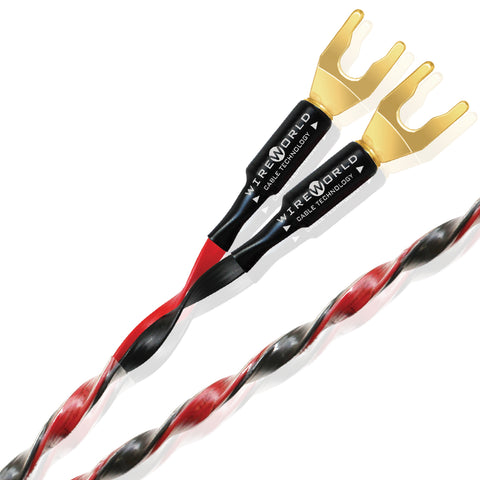Getting the maximum sound quality from your system requires more than purchasing great speakers and components, it also includes selecting the best speaker cables to connect them. In some cases, using the best speaker cables can be just as helpful as having speakers you love and good room acoustics. However, sorting out the details of what is important in speaker cables can be confusing because of marketing gimmicks and a basic misunderstanding of how cables function. Those issues lead many audiophiles, home theater buffs and audio professionals to believe that the electrical parameters of resistance and impedance are the most important details to consider when selecting the best speaker cables for quality audio sound.

The nominal impedance of a speaker is a basic measure of how the speaker resists electrical current. The impedance of most speakers falls within the range of 4 to 8 ohms. Those impedance numbers are useful in calculating how much resistance is acceptable in the speaker cables. Those calculations use speaker impedance, cable length and amplifier power to determine the wire gauge (AWG or mm2) that will keep the power loss of the speaker cable below 5%. While speaker cable gauge is important, it is not the most critical factor influencing the sonic qualities of a speaker cable. The resistance of a speaker cable can only be used to predict the amount of amplifier power a cable will waste as heat. It cannot tell us how well a cable preserves the delicate shapes of the musical waveforms we hear as music.
There is a simple comparison that proves wire gauge is not the most audible cable specification. The comparison begins by listening to equal lengths of two different gauges of generic speaker cable (for example 16AWG vs 14AWG). The sonic differences between those two cables may be audible, but they will likely be very minor. The second comparison will be between two pairs of 16AWG cables with one pair modified by splitting the cable to separate the two conductors. The listening comparison of those two cable pairs will reveal striking differences in sonic character and quality. The split cable will sound compressed, colored and muffled in comparison to the non-split pair. That obvious difference in sound is due to the basic explanation of signal transmission, which states that the signal energy is moved through cables by an electromagnetic field that vibrates electrons in the conductors. That definition tells us why the split 16AWG cable has more loss. Splitting the conductors moved the + and – conductors further apart, which weakened the electromagnetic field. From this comparison we learn that strengthening the magnetic field is necessary to create the best performing speaker cables.
Wireworld’s patented DNA Helix technology was formulated to maximize the strength of the electromagnetic field that moves music signals through cables. That is how Wireworld speaker cables provide the closest sound to the ultimate purity of a direct connection between amp and speaker, the only scientific reference standard for speaker cable performance.
When you are ready to purchase the best speaker cables for your sound system, Wireworld Cable Technology has you covered with a wide range of speaker cables that will give you the best value and enjoyment from your investment. From the entry level Helicon 16 to the cost is no object reference cable, Platinum Eclipse 8, these speaker cables use the superior DNA HELIX technology to deliver dynamic, vibrant, quality audio sound that you will love for years to come.
See our wide range of speaker audio cables.

